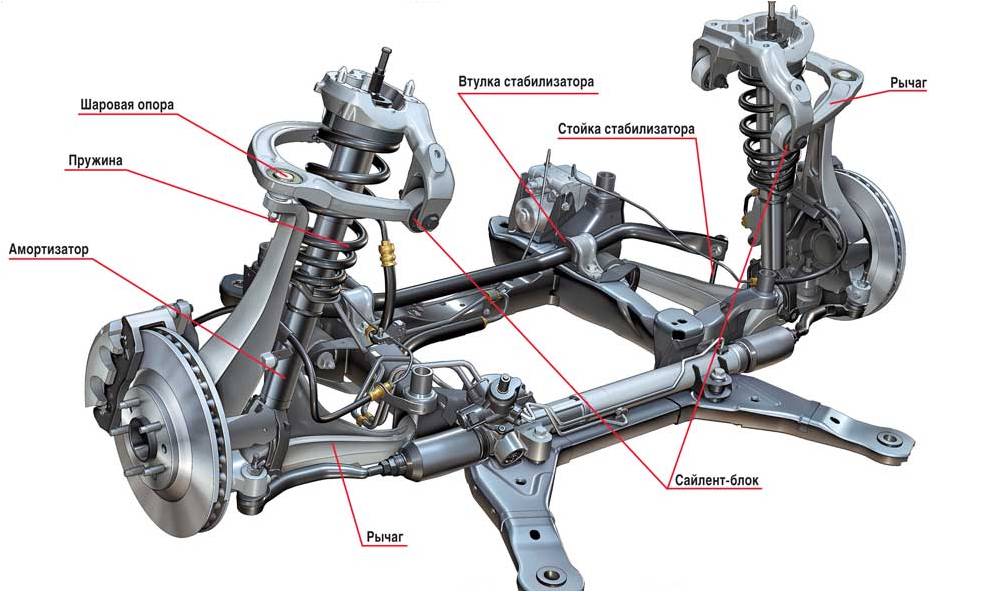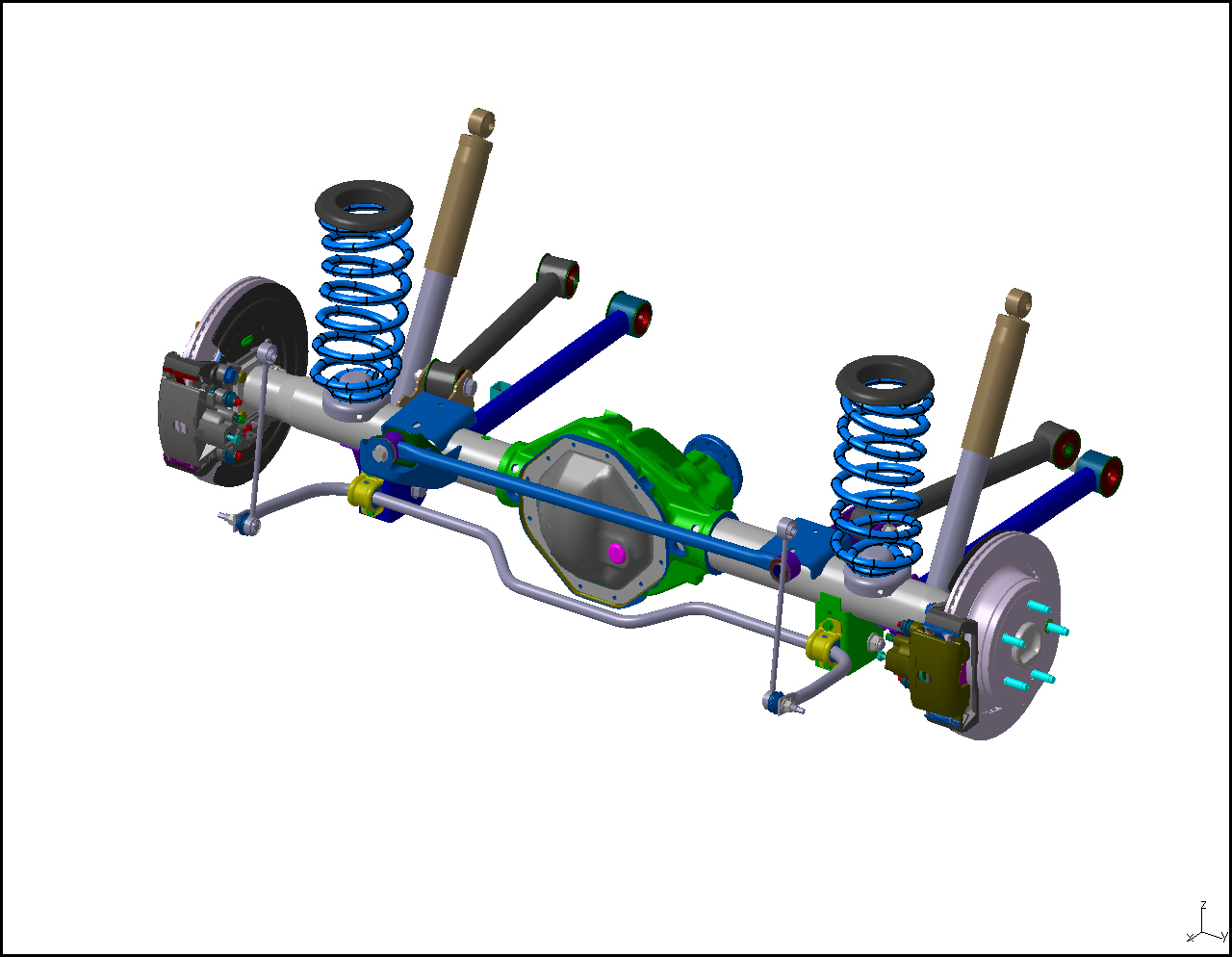
What is the difference between the chassis and suspension of a car
The body and wheels are connected by an elastic structure, which reduces the amplitude and frequency of vibrations from road surface irregularities. The main purpose of the device is to create the necessary comfort and safety for passengers and the driver of the car.
The comfort and safety of the car is provided by an elastic device - the suspension. And the general damping structure is additionally involved in the transmission of the moment of movement of the machine. Let's take a closer look at the difference between the chassis and suspension of a car.
What is a running gear
Between the body and the wheels there is an elastic system that dampens vibrations and vibration from road irregularities. Thanks to this device, passengers of a passenger car are protected from noise and shaking. In addition to elastic properties, the undercarriage of the machine is distinguished by the transfer of momentum from the transmission to the wheels and body. Another purpose of the design is to protect against a dangerous roll during maneuvers and turns at speed.
The composition of the chassis of the car:
- front suspension;
- rear elastic device;
- rubber pillows of the engine and transmission;
- tires and rims.

Chassis of a car
Damping components and parts are combined into one common design to protect the body from vibration and shocks. The oscillations that occur when the car is moving have a big difference in amplitude and time of impact on the suspension. The chassis transforms large bumps on the road into slow rocking of the body. The work of damping small vibrations is effectively performed by rubber inserts and springs.
The undercarriage of the car is distinguished by the reception of large loads during movement. Therefore, the parts of the device wear out quickly. In this connection, it is necessary to regularly diagnose the components and systems of the automobile chassis. If necessary, replace defective parts with new ones.
Inspection and maintenance of the suspension is carried out once every 10000 km. It is necessary to make diagnostics after a strong blow to the wheel and suspension when hitting an obstacle. Proper and regular maintenance and repair of the chassis increases the life of the car.
What is suspension
The body and wheels are connected by an elastic structure, which reduces the amplitude and frequency of vibrations from road surface irregularities. The main purpose of the device is to create the necessary comfort and safety for passengers and the driver of the car.
The main types of car suspensions:
- Dependent - connecting the body and the axle with a pair of wheels. The damper is usually a spring or spring. This type of suspension is more commonly used in trucks and buses.
- Independent - works on each wheel separately. Effectively dampens vibrations and body roll even when the car hits an obstacle with only one side.
- Multi-link type "MacPherson" with suspension struts - more often used on the rear axle of a front-wheel drive car.
- Semi-dependent - combines the advantages of a lever design and a rigid one. The torsion bar dampens body roll well when cornering.

Advantages and disadvantages of dependent suspension
List of suspension elements:
- levers and supports;
- hinge nodes;
- shock absorbers;
- springs;
- silent blocks;
- protective covers - anthers.
The difference in the design of the front drive of the machine is that the elastic device allows the wheels to turn synchronously around a vertical axis. All thanks to the hinge joints - internal and external CV joints. Any type of damping device consists of a base - a solid beam, with which the rest of the structural elements are connected with fasteners.
Suspension and chassis - the same thing?
The car is not operated in ideal conditions. On the road there are pits and bumps, slippery surface. An important function of protection against vibrations and dangerous body roll is performed by the undercarriage. Suspension - the main part of this design - perceives and absorbs external energy impact on the body.
Functions of systems and elements of the chassis of the car:
- The frame to which the nodes of the elastic device are attached. The supporting structure is usually made of steel and other durable materials.
- Suspension on the rear and front axles, damping vibrations from shocks and taking the moment of movement. The design is different for different queen cars.
- Well protected from corrosion bridge made of durable metal. The mass of the vehicle rests on this node.
- Wheels with tires that directly take impact from road bumps. The condition of the tires affects the car's handling and driving safety.
- Additional elastic elements of the undercarriage reduce noise and vibration. Rubber and spring inserts, hydraulic and pneumatic elements effectively absorb vibration energy.
The main signs of a malfunction are the car moving to the side when coasting, strong rocking and body roll, knocks in the suspension and vibration in the cabin.
